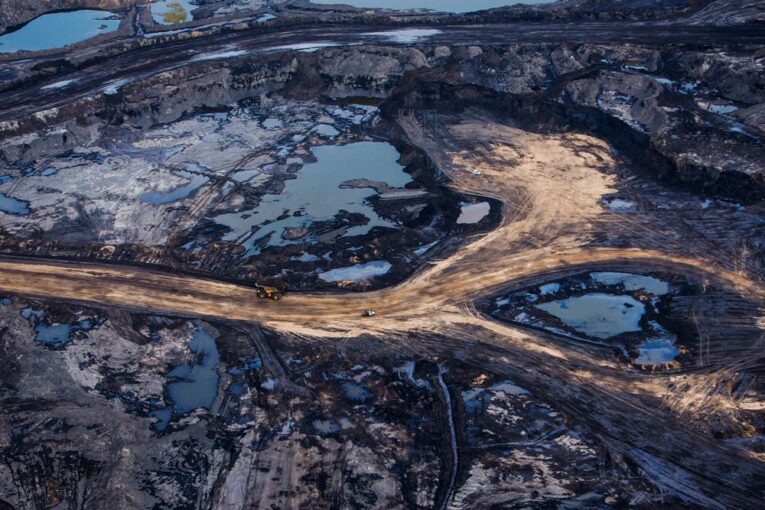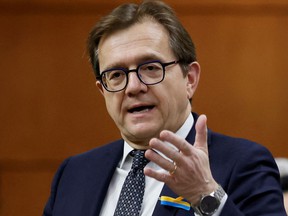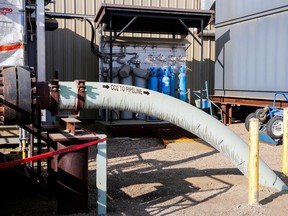
Canada can increase oil and gas production to meet energy security concerns, but it also faces the prospect of making major investments to meet its climate goals — a price tag that could require up to $65 billion in spending in the oilsands by 2030.
These are among the key conclusions from Canada’s largest bank in a new report that examines the complex balancing act today surrounding climate policy and security of supply concerns.
In a study released today, the Royal Bank of Canada says the country can increase oil production by up to 500,000 barrels per day over the next year.
However, this could add another nine million tonnes of greenhouse gas emissions annually, costing $1.5 billion a year to abate, while delivering potential net benefits to the country worth $10.5 billion, RBC economists found.
And if Canadian crude supplants other barrels globally, there would not be an increase in overall emissions.
“Canada’s oil and gas sector can support near-term energy security while advancing climate action, but will need regulatory certainty and support at all levels of government,” states the report.
“To secure more energy supplies, Canadian policymakers should signal greater comfort with a short-term rise in oil emissions — as long as emissions start to fall in other areas, or oil production starts coming offline beyond 2030.”
Short-term considerations are only part of the challenge.
The federal government aims to curb GHG levels by 40 to 45 per cent by 2030 and that will require some serious spending.
In the oilsands, capital investment of $45 billion to $65 billion will likely be needed between 2024 and the end of this decade, plateauing at around $9 billion annually by 2026, on technologies such as carbon capture, utilization and storage (CCUS), the report finds.
RBC economist and study co-author Colin Guldimann said much of the energy debate in recent years has focused on climate challenges, although it has shifted with the invasion of Ukraine by Russia, the world’s largest oil and gas exporter.
“Canada can manage through this crisis to achieve energy security and climate security over the long term, but there are going to be some challenging choices to be made,” Guldimann said in an interview.
Reaching Canada’s climate ambitions while adding oil production will require new spending on methane reductions, as well as electrification and carbon capture across industries, the report said.
The delicate issue of managing energy security and climate considerations has emerged as a key policy issue in Canada this year.
Last month, Natural Resources Minister Jonathan Wilkinson said Canadian producers will boost output by up to 300,000 barrels of oil equivalent (boe) per day in 2022 to help European allies shift away from Russian imports.

The Trudeau government also unveiled a new plan this month that projects a 42 per cent reduction in emissions from the Canadian oil and gas industry by the end of the decade.
Premier Jason Kenney has called the new national strategy “a bad joke.” Wilkinson insists Canada can deal with both issues at the same time.
The RBC report concludes “both goals are within reach — but at significant cost.”
Methane reduction technology will help reduce the industry’s emissions, but part of the focus in the short to medium term will rest on CCUS, capturing carbon dioxide emissions and burying them underground.
An investment tax credit included in the federal budget will cover up to half of the investments in equipment to capture CO2 in such developments. The study calls the tax credit a significant step that should spur investment.
“But for widespread deployment … more effort from provinces will be needed. This could include a top-up on the credit, but also improvements to non-financial parts of CCUS projects.”
Six of Canada’s largest oilsands producers, including Suncor Energy and MEG Energy, have committed to reaching net-zero emissions by 2050. Their multibillion-dollar plan includes constructing a CO2 trunk line connecting facilities in the Fort McMurray area to a storage hub near Cold Lake.
“This is a (federal) investment tax credit for all emissions-intensive industries,” Derek Evans, chief executive of MEG Energy, said in a recent interview.
“It’s enabling you to put the infrastructure in place to get Canada moving faster on its goal of getting to net-zero by 2050.”

One of Canada’s major challenges will be to remove carbon emissions from the oilsands without making the resource uneconomic to extract, according to the report. Full decarbonization of the oilsands could cost between $6 and $14 a barrel for mined bitumen, and $17 and $23 for thermal oilsands developments.
Overall, decarbonization with CCUS will require benchmark U.S. oil prices to average about $50 WTI through 2050, the study says.
The report also suggests Canada and the U.S. establish a North American energy security alliance, which could include long-term contracts with refiners to provide certainty for oil producers to invest in decarbonization efforts.
While there will be some skepticism about whether Canada can lower emissions and also increase output, it’s worth noting that the oilsands sector has already reduced emissions per barrel by 20 per cent in the past decade.
Another decline of up to 28 per cent is expected within 13 years as efficiency improvements continue — and overall oilsands emissions will begin to drop around 2025, despite additional production coming online, says a report by S&P Global Commodity Insights released this month.
“It means that in an entire basin — one of the largest supply sources in the world — emissions will begin to decline,” said report author Kevin Birn, a vice-president with S&P.
Birn believes the Canadian oilsands industry has the ability to boost production to meet global security of supply concerns, although pumping out more oil will raise the hurdle that the industry must clear to reach the country’s new emissions goals.
“It means you have to dramatically improve the efficiency of each barrel you produce,” he added.
“If the industry wants to meet its ambitions, it is going to have to move very quickly. And the government is going to have to work with industry to allow them to move quickly.”
Chris Varcoe is a Calgary Herald columnist.
You can read more of the news on source
